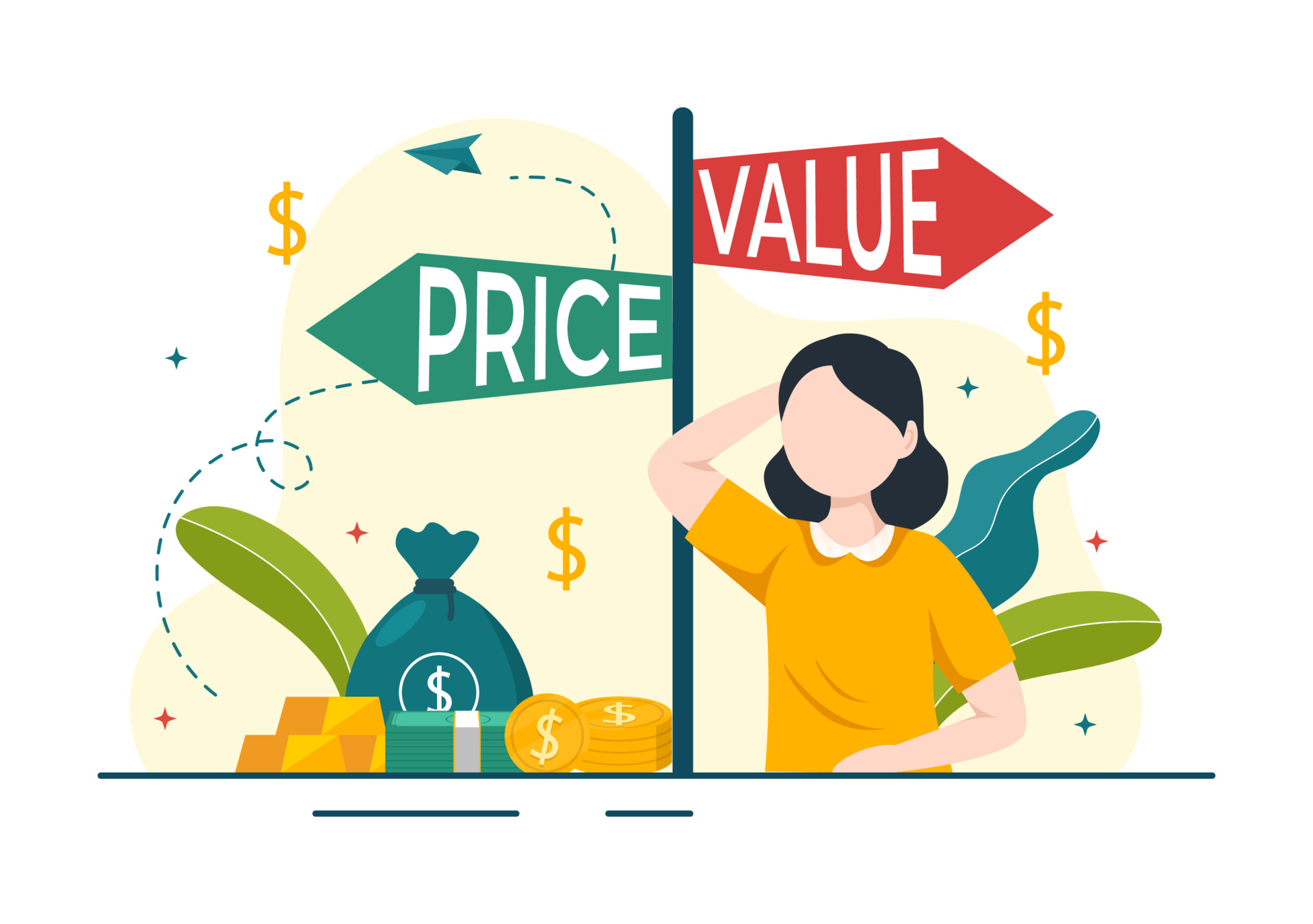
The Psychology of Pricing: A Powerful Playbook for Marketers
Sep 13, 2023 4 minutes
Ever thought about why some products, even with a higher price tag, fly off the shelves while others don’t? Or why a simple tweak in the way a price is displayed can dramatically affect sales?
If you’re nodding along, then you’re in the right place. We’re about to deep-dive into one of the most intriguing yet underrated aspects of marketing: the psychology of pricing.
Now, you might think pricing is all about covering your costs and making a decent profit. Well, that’s just scratching the surface. Pricing is actually a crucial part of your marketing strategy, armed with the power to make or break a sale based on how it aligns with customers’ perceptions and behaviors.
Pricing as a Marketing Strategy
Alright, so you’ve got an amazing product. You’ve invested time, money, and endless cups of coffee into creating something you’re proud of. You’ve covered all the bases: product quality, branding, and even a killer marketing campaign. But hold up—have you given enough thought to your pricing strategy?
Psychological Pricing: More Than Just Numbers
Let’s introduce you to the concept of psychological pricing. You might have encountered terms like “charm pricing” (think $19.99 instead of $20), “prestige pricing” (where higher prices indicate superior quality), and even “odd-even pricing” (using odd numbers or even numbers to trigger specific emotional responses). These aren’t arbitrary decisions made by bored marketers; they’re carefully crafted pricing methods backed by years of research into consumer behavior.
In the realm of direct response marketing, where every click, impression, and conversion counts, understanding the psychology of pricing can make a world of difference. Imagine setting prices that not only cover your costs but also serve as an unspoken dialogue between you and your customers, nudging them closer to the “Buy Now” button.
The Connection to Consumer Behavior
The way you set your prices communicates something powerful about your product, whether you’re aiming for the perception of affordability, luxury, or value for money. It plays a significant role in decision-making, tapping into customers’ perceptions and preconceived notions about what your product is “worth.”
So, before you jot down any old number, ask yourself:
- What message are you sending?
- Are you aiming for a quick sale or building a long-term customer relationship?
- Are your pricing strategies in sync with your marketing messages?
Getting your pricing right means harmonizing it with your overall marketing strategy, taking into account the psychological impact it can have on prospective customers. And let me tell you, getting into the minds of your customers is a game-changer.
Emphasizing Value Over Cost
So, you’ve dialed in your product pricing to fit nicely within your marketing strategy. High five! But wait, there’s another layer to this pricing onion that needs peeling: Value.
When customers look at a price tag, they’re not just seeing a number; they’re mentally weighing the cost against the value they’ll get from the product. So, a critical aspect of psychological pricing is making sure your customers see far more in value than what’s coming out of their wallets.
A Case Study in Value-based Pricing
Let’s consider Bidsketch, a proposal software company, as a prime example. They don’t just sell proposal software; they sell a tool that helps you create proposals faster, which means more time for you and potentially more closed deals.
Who wouldn’t want that? By focusing on the ROI—think time saved, deals closed, and stress alleviated—Bidsketch makes the actual price seem like a no-brainer in comparison.
So, how do you achieve that same kind of “aha moment” for your customers? Simple. Turn the spotlight on the ROI (Return on Investment) your product offers. Whether it’s a service that saves time, a gadget that saves money in the long run, or an experience that’s once in a lifetime, make sure your customers are aware of the incredible bang they’re getting for their buck.
Time-Saving as a Tangible Asset
Let’s talk about time for a second. In our fast-paced, always-on society, time is gold. In some instances, people value time-saving benefits even more than cost-saving ones. It’s a psychological quirk that’s very well-documented. So, if your product can save your customers time, shout it from the digital rooftops!
Aligning Your Messaging
Ultimately, the trick is to make sure your marketing messaging aligns with this value proposition. Your social media ads, email campaigns, and even your product descriptions should all echo this sentiment. “Why settle for less, when you can have so much more value?”
The Double-Edged Sword of Comparative Pricing
Let’s switch gears a bit and talk about something we’ve all seen but perhaps haven’t fully understood: Comparative pricing. You know, those moments when a product is compared directly to a competitor’s offering to show its relative affordability or superiority.
Not a One-Size-Fits-All Strategy
Contrary to popular belief, comparative pricing isn’t a foolproof strategy. On one hand, it can make your product seem like a steal (“Look how much more affordable we are!”) or the premium choice (“Our features are clearly superior!”). However, consumer behavior isn’t always predictable.
In fact, comparative pricing can sometimes backfire, causing unintended consequences like risk-aversion among buyers.
Implicit vs. Explicit Comparisons
Here’s a fun fact: Implicit comparisons, where consumers naturally compare products, are often more influential than explicit comparisons. That’s right! When marketers say, “Compare us to XYZ,” it often makes consumers cautious and skeptical, triggering a more rigorous evaluation than intended.
It’s the psychological equivalent of telling someone not to think of a pink elephant; suddenly, that’s all they can focus on.
Your checkout experience is just as powerful as your pricing. Let’s take a look.
The Paradox of Choice and Simplified Pricing Packages
You’ve probably heard the phrase, “The more, the merrier,” right? Well, in the realm of pricing and product options, this saying doesn’t always hold water. In fact, giving your customers too many choices can have the opposite effect, causing decision paralysis.
The Supermarket Jam Experiment
Let’s look at a classic study to illustrate this point: the supermarket jam experiment. Researchers set up two tables—one with 24 varieties of jam and the other with just 6. Guess which table generated more sales? You got it, the one with fewer choices. When overwhelmed with options, people are actually less likely to make a purchasing decision.
Streamlining Options for Decision-making
So what does this mean for you as a marketer? Consider bundling your services or products into 3-5 streamlined packages. This makes it easier for customers to compare and choose, aligning well with their decision-making process. Remember, complexity is the enemy of conversion, especially in the quick-action world of direct response marketing.
Tweak the Presentation, Reap the Rewards
It’s not just about the number of choices; it’s also about how you present them. Small tweaks can make a big difference. For instance, you may find that a redesigned pricing page leads to a 25% increase in conversions. So, yes, details like the left-most digit, full price vs. discount prices, and even font sizes can all feed into the psychological pricing strategies you employ.
Avoid Confusing Elements
Lastly, make the user experience as simple as possible. Complicated decimals, too many commas, or hard-to-read fonts can turn off potential buyers. You want the path from interest to purchase to be as frictionless as possible, capitalizing on their initial impulse to click on your product.
Tricks of the Trade: How Retailers Influence Your Behavior
Let’s delve into some retail psychology hacks that you’ve probably encountered without even realizing their strategic intent. These are the little nuances that can make a big difference in consumer perception and decision-making.
Charm Pricing: The Magic of Price Ending in “9”
Ah, the classic “charm pricing” technique. You know, when something is priced at $19.99 instead of a clean $20. Studies show that these “charm prices” often lead to higher sales. Our brains are wired to read from left to right, and so the first digit we see—a ‘1’ instead of a ‘2’—has a greater psychological impact.
Dollar Signs and Innumeracy
Ever notice how upscale restaurants often omit the dollar signs from their menus? This is a subtle trick to disconnect the price from the concept of money, making you less likely to think about the cost. Retailers often use similar tactics online, especially in markets targeting less price-sensitive consumers.
Scarcity and the Fear of Missing Out
Another psychological trick often employed is the implication of scarcity. Limited-time offers or per-customer purchase limits can create a sense of urgency. No one wants to miss out on a good deal, and retailers capitalize on this fear of missing out (FOMO) to drive quick decisions.
Decoy Effect and Prestige Pricing
The decoy effect is another intriguing strategy. By offering three price points where one is clearly less appealing, you can steer customers toward the middle option, which often has the highest profit margin. Similarly, prestige pricing sets prices intentionally high to convey quality and exclusivity.
Make It Easy to Compare
Streamlining your price points to be easily comparable also aids in quick decision-making. Rounded numbers for packages, for instance, make it simple for a customer to gauge value at a glance. This can be especially useful in ecommerce environments where a/b testing can quickly reveal which pricing strategies resonate most with your audience.
Psychological Impact Through Presentation
Small tweaks in price presentation can lead to big changes in consumer behavior. Whether it’s reduced font size for sale prices or strategic placement of the original price next to the discounted one, these seemingly minor details can have a powerful psychological impact.
Direct Response and Pricing Tactics
In the realm of direct response marketing, these tricks can be particularly potent. Your aim is to get the customer to act now. Using a combination of these pricing methods can play a crucial role in achieving that quick, favorable response you’re after.
Still not seeing conversions? We can help!
Aligning Pricing Strategy with Marketing Goals
After this whirlwind tour through the psychological factors that influence pricing, let’s bring it all back home. The crux of the matter is that pricing isn’t an isolated function; it’s intertwined with every other aspect of your marketing strategy.
Data-Driven Decisions
First off, let’s talk about data. By now, we all know that gut feelings and hunches are not sufficient guides in the complex landscape of modern marketing. A/B testing, customer feedback, and thorough market research are your best friends when it comes to optimizing your pricing.
For instance, if you’re in ecommerce, a small adjustment on your pricing page can be tested to measure its actual impact on sales conversions. Use that data to inform your decisions and refine your approach.
Tailoring to Your Target Market
It’s crucial to recognize that different consumer groups respond to different pricing strategies. Are your customers mainly bargain-hunters or are they looking for premium, high-end products? Your pricing methods need to reflect these customers’ perceptions and buying behaviors.
Wrapping It Up: Actionable Steps for Marketers
Well, you’ve made it this far, and that’s no small feat! Pricing is a rich and complex subject, and hopefully, you’ve gained some valuable insights into how deeply it intertwines with psychology and consumer behavior. Let’s recap some actionable steps to take your pricing game to the next level.
- Audit Your Current Pricing – Take a close look at your current pricing strategies. Are you simply covering costs and adding a profit margin, or are you actively considering the psychology of your potential buyers? It might be time for a revamp.
- Conduct Market Research – Nothing replaces good, old-fashioned research. Use tools and methodologies to collect data on how customers perceive your pricing. This will give you the insights needed to tailor your pricing strategies more effectively.
- Test Different Approaches – Don’t shy away from A/B testing different pricing methods, whether it’s charm pricing, decoy effect, or even prestige pricing. Measure conversions, click-through rates, and customer feedback to gauge effectiveness.
- Simplify, Simplify, Simplify – Remember the jam experiment and the paradox of choice? Make your pricing as simple and straightforward as possible. Avoid option overload and focus on 3-5 streamlined packages to improve consumer decision-making.
- Align with Overall Strategy – Ensure that your pricing is coherent with your overall marketing strategy. This includes your messaging, brand positioning, and targeted consumer groups.
- Keep an Eye on the Competition – While you shouldn’t blindly follow the competition, being aware of market trends and how competitors are pricing their products can offer valuable perspectives.
- Make Adjustments as Needed – The business landscape is ever-changing, and so should your pricing. Regularly revisit your pricing strategies to ensure they remain effective and aligned with your current marketing objectives.
Take Action Now
Don’t let your newfound knowledge go to waste. Implementing a well-researched pricing strategy is vital, but what’s equally important is having a reliable and efficient way to manage those transactions.





2 thoughts on “The Psychology of Pricing: A Powerful Playbook for Marketers”